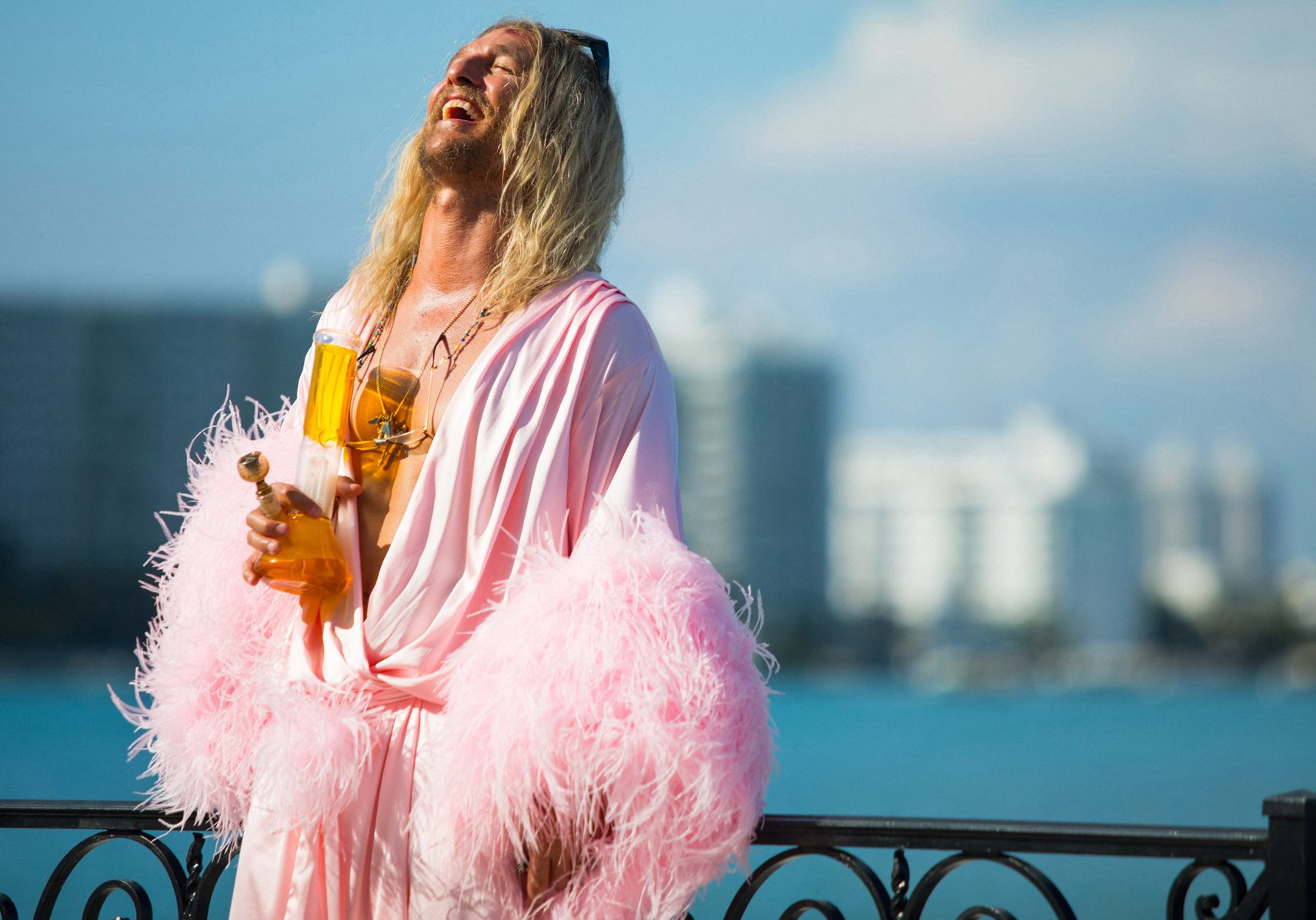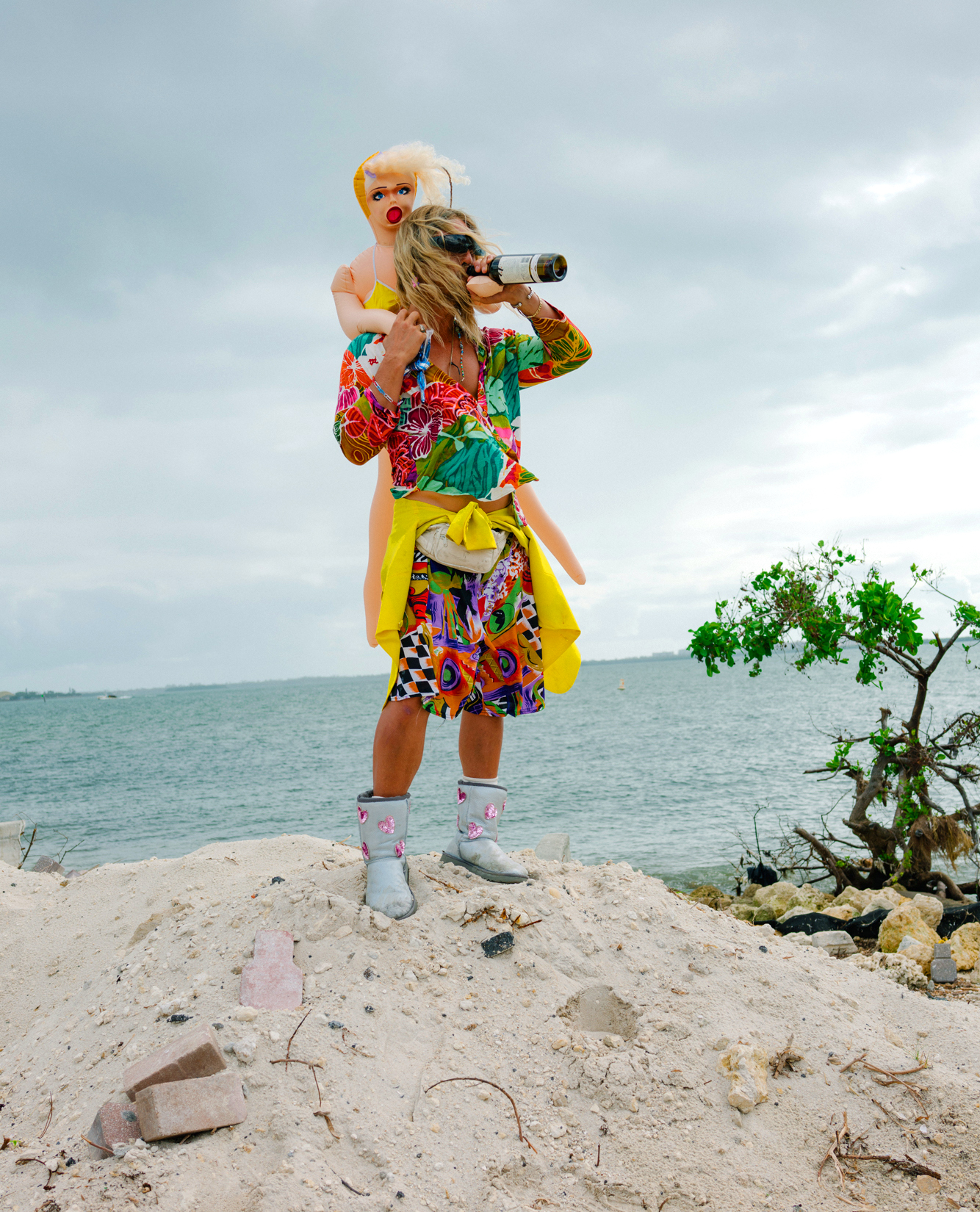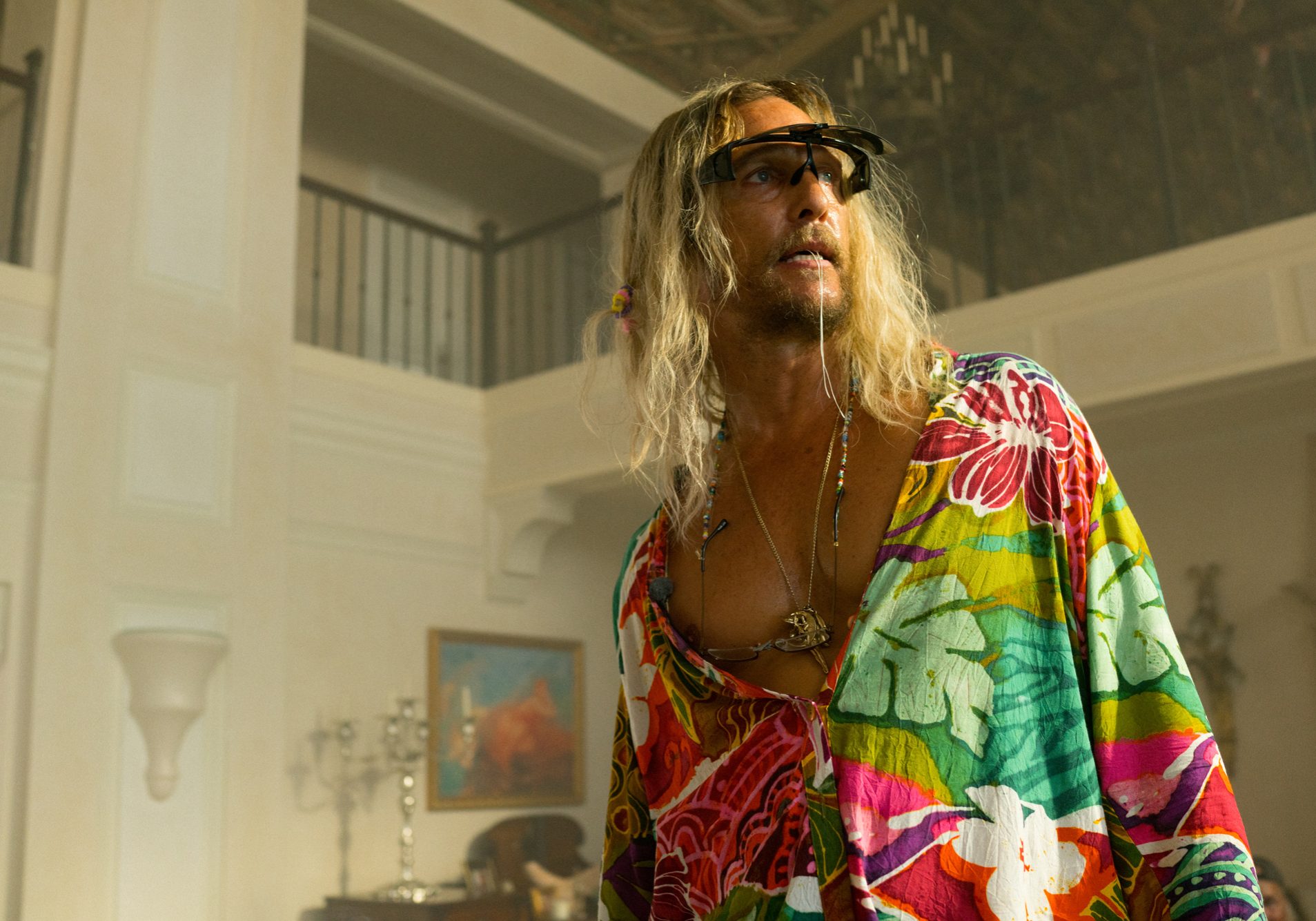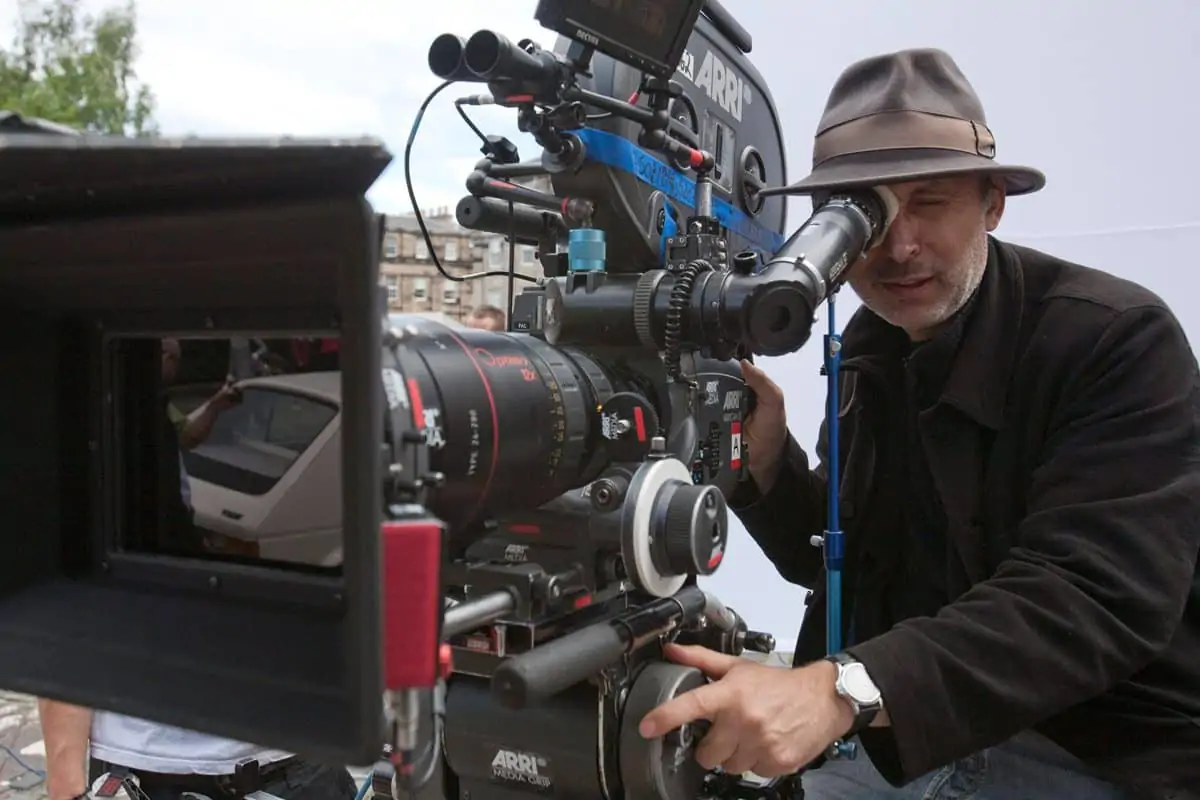Miami vibe
Benoît Debie SBC / The Beach Bum

Miami vibe
Benoît Debie SBC / The Beach Bum
BY: Ron Prince
"Life's a f***in' rodeo! I'm gonna suck the nectar out of it, and f*** it raw dog, 'til the wheels come off," proclaims Moondog, the permanently stoned, drop-out poet at the heart of provocateur helmer Harmony Korine's crazy 35mm comedy The Beach Bum.
With a sizzling soundtrack accompanying a riotous explosion of candy-coloured celluloid images, the action follows the free-spirited troubadour, played by Matthew McConaughey, as he lives life to the max at all manner of mad Miami parties, while swigging beer and consuming a mountain of marijuana, including smoking a joint stuck between the toes of his outrageously wealthy wife, played by Isla Fisher. The rest of the movie's A-list ensemble also deliver some of their wackiest performances to date, with Snoop Dog as a shady character called Lingerie, Zac Efron a rabble-rousing rehab patient, Martin Lawrence a sailboat skipper whose mind is possessed by porpoises, and Jonah Hill who delivers his performance in a meaty Cajun drawl.
With accounts of real weed being smoked on-set grabbing the headlines way before the movie's release, The Beach Bum has become Korine's hotly-anticipated directorial follow-up to the vivid and ferociously feral Spring Breakers (2013), shot on 35mm film by Belgian cinematographer Benoît Debie SBC. The pair re-teamed for The Beach Bum, harnessing celluloid once again too, with the aim of bringing even more outrageous, psychedelic and rebellious misadventures to the big screen.
"From the very beginning, when I first read the script of The Beach Bum, Harmony told me that he wanted to create an extremely vivid Miami vibe, and for the look to go even further in terms of crazy colours than we had achieved on Spring Breakers," says Debie.

The cinematographer is a stalwart advocate for celluloid production, having lensed features such as Gaspar Noé's Irreversible (2002) and Enter The Void (2009) on 16mm and 35mm, Floria Sigismondi's feature The Runaways (2010) on 16mm and Ryan Gosling's originated Lost River (2014) on 35mm. In 2018 he also shot music videos for Rihanna and The Carters (Beyoncé and Jay-Z) - all on 35mm.
"Harmony and I both love shooting on film more than ever," he says. "Knowing that I would be photographing The Beach Bum on 35mm, I was really excited to experiment with the exposure, lenses and lighting, to really push the look and try to achieve a level of colour I had never attained before. I have shot a lot using digital cameras, and I knew there was no way I could capture such a flashy, vivid palette of colours digitally."

Accordingly, Debie, who operated during the production, went with ARRI LT and ARRI 235 lightweight 35mm cameras to enable a swarming, free-flowing handheld style, framing the action with a unique set of Anamorphic lenses, which he had specially shipped to the US for the shoot. These lenses - which combine vintage Lomo front elements with old Zeiss back elements - were custom-made for Debie several years ago in order to "kill the severe sharpness of digital cameras, with which I was so disappointed," he declares. "These Anamorphics flare, vignette on the edge of frame, and their intrinsic diffusion, aberrations and organic depth-of-field were a perfect match with the textural quality of 35mm film in creating the trippy, dreamy and bonkers look we wanted."
Debie went with the same combination of film stocks on The Beach Bum as he had previously selected for Spring Breakers - namely Kodak Vision3 250D 5207 and Vision3 500T 5219. Film processing was done at Fotokem in Los Angeles.
"Overall, the sheer palette of colours, the contrast, the way film renders skin tones and the levels of image detail are so much better, more natural, than they are with digital," he says. "By its nature the 250D is a very colourful stock, and was perfect for capturing the nuances of the rich colours of our Miami and Florida Keys exterior locations as well as our selected interiors. It's also fast enough to use in low-light situations, so I also used it on a number of nighttime scenes. It's really quite beautiful when you shoot on 250D in firelight or with Tungsten fixtures as it gives a luxurious warmth in the image.
"I used the 500T for most of the nighttime scenes - including an outrageous swimming pool scene that I really love the look of - and frequently pushed by one stop to 1,000ASA in really low-light scenes. The 500T has exceptional dynamic range, and it can easily take that sort of over-exposure and still look exquisite."
"the outstanding merit of using LEDs with celluloid film is that you can see and feel the separation of the colours you create on-set. With digital, it's very difficult to see any layers of colour... but the nuances are all there on film."
- Benoît Debie SBC

Unlike Spring Breakers, which saw Debie deploy a bevy of coloured gels over the lighting fixtures in order to soak the sets and characters in colour, for The Beach Bum he took full advantage of the very latest RGBW-controllable LED lighting fixtures - such as ARRI SkyPanels and Astera film lighting batons - to infuse vividness into the images.
"The beauty of the newest LEDs is that you have a lot of latitude to play around and to adjust the colours in a scene very quickly - which is just as well, as filmmaking with Harmony can often be a freestyle adventure, and we enjoyed making it up as we went along.
"But the outstanding merit of using LEDs with celluloid film is that you can see and feel the separation of the colours you create on-set. With digital, it's very difficult to see any layers of colour. Take green for example, you can record green digitally, but it's hard to register the cyan, yellow or red inside this green. But the nuances are all there on film. Also, when it comes to shooting the dark, with deep blacks, or highlights with overexposed white, film is still miles ahead of the digital alternative."

Debie confesses that he is not allied to any shooting format, except film. "For sure, I love the sheer quality of film and the platform it gives the director to tell their story. From an aesthetic point-of-view, film remains a far superior emotional and artistic medium. I am always excited to see the results from the lab. They are always interesting, and I never really have that same feeling with digital.
"But I also love the difference that film brings to the set. During production, everyone knows that the film in the magazine is a finite resource, and with that comes a certain intensity, concentration and focus amongst the crew and the actors. With digital, you keep rolling and rarely stop the camera. You lose energy, you lose the natural break to pause, reset and go again. Some can't see the difference, and some don't care. But for those who want to create something distinctive, something that that stands out from the crowd, such as The Beach Bum, you can't beat film."











